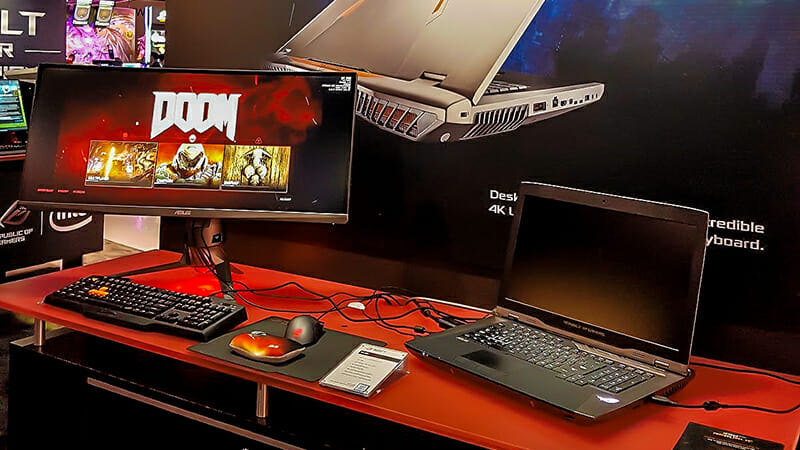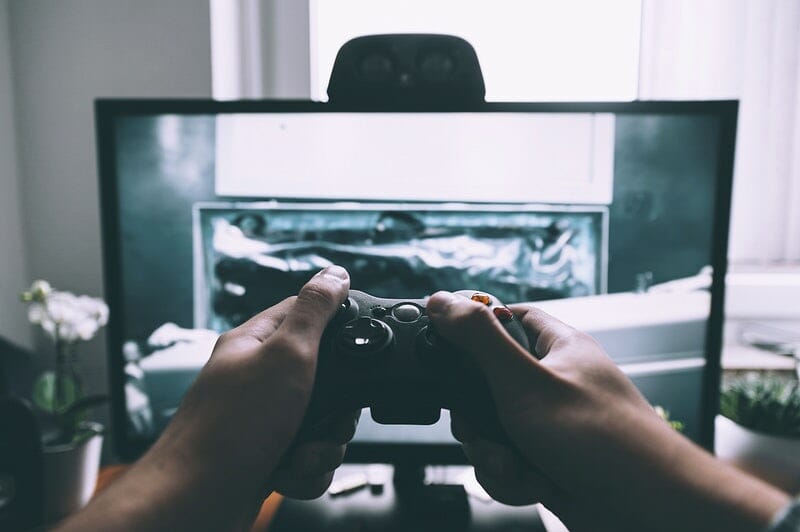Table of Contents
After years of 1080p as the go-to standard for PC gaming, the sector has taken big strides in making higher resolutions much more viable. The first was AMD Eyefinity, a proprietary technology that allowed you to use multiple monitors for gaming.
But what if, instead of using three smaller monitors, or even a giant 27-inch beast, you could use one monitor that had nearly twice the screen real estate? That’s where 2560 x 1440 comes in.
Here’s why this resolution is worth pursuing. Again, is it or isn't it a realistic option for gamers in the near future?

What Is a 2560 x 1440 Resolution?
So you're a PC gamer. You already know that the higher the display resolution, the better your gaming experience.
The problem is, you don't want to get one of those 4K monitors that cost, like, three thousand bucks. So what's the next best thing?
The answer is 2560 x 1440. This resolution is also known as WQHD, short for Wide Quad High Definition.
To put that into perspective, a QHD screen is around 1.7 times sharper than a 720p HD display and 2.4 times sharper than a traditional 1080p display. If you were to use two Full HD monitors next to each other, the total resolution would be similar to a WQHD monitor.
More pixels come in handy when using multiple windows on your desktop or playing games with detailed graphics. It's no wonder that the 2560 x 1440 resolution is currently the sweet spot for high-end gaming displays.

Why Do You Need a 2560 x 1440 Resolution?
The PC gaming world is moving toward a high-resolution 2560 x 1440 resolution. At first glance, the move to a higher resolution may seem out of reach for most gamers. However, it's what you might want to do next.
Impact of 2560 X 1440 on Image Quality
The beauty of a standard 1080p display is in its simplicity. It has a 16:9 aspect ratio and 1920 horizontal pixels by 1080 vertical pixels. That gives it a total pixel count of 2,073,600 (2.07 megapixels). A wide Quad HD display has the same 16:9 aspect ratio, but it ups the pixel count to 3,686,400 (3.69 megapixels).
Having as many pixels means having more detail and sharper images. This can be particularly noticeable when playing games that use lots of fine details like textures and shadows.
The current crop of 2560 x 1440 monitors also tends to use better quality panels than their 1080p counterparts. While there are a few exceptions, most include features like higher refresh rates and better response times (see 'Refresh Rate vs. FPS').
Therefore, such higher resolutions offer better immersion in the game world, and it can be a great advantage in competitive games.
Factors to Consider Before Buying a 2560 X 1440 Display Resolution
Screen Size
Your standard laptop, netbook, and ultrabook screens have a low resolution – HD+/FHD in some cases. To get the most out of your gaming content, you need to get something with a higher resolution.
The sweet spot is 30 inches for many users, with the best balance of pixel pitch. 27-inch screens are cheaper but with less pixel density (especially if they're 1920 x 1080).
If you want to go bigger than a 32-inch monitor, be prepared to pay a lot more for features like multiple inputs or USB hubs. It's bigger than that, and you're probably better off with a 4K screen.
Can Your Computer Handle Higher Resolution?
You'll need a discrete graphics card to play games at this resolution effectively. Get to know your graphics card's specifications.
If you have an NVIDIA GeForce GTX 970 or better (recommended) and an Intel Core i5 or better, you can probably handle a 2560 x 1440 screen with ease. However, make sure that your power supply is up to the task. You'll need a very beefy computer for this resolution.
Will Newer Games Work on Your Screen?
This one is tricky because it depends on your graphics card and which games you're planning to play.
Games that are a few years old should work fine, but games become ludicrously demanding. If you want to play modern games on a 1440p monitor, make sure that your card can handle it. Nvidia's GTX 970 is the bare minimum for satisfying results at this resolution. Anything below that, and your frame rates become choppy, even on modest settings.
For ultra-high quality settings with 60fps, you'll need a GTX 980 or better for everyday use.
Should You Buy an IPS or TN Panel?
TN panels are usually cheaper than their cousins, but they have worse viewing angles and color accuracy. They also don't work with VESA mounts or support adaptive sync (G-Sync/FreeSync).
IPS panels are better in every way, but more expensive. They offer the best colors and viewing angles, though not as fast. So, if you value visuals over speed, go for an IPS screen such as the Asus PB278Q.
What About G-Sync or Freesync?
There is no single "better" choice—it depends on your specific needs and preferences. Here are some things to consider:
- G-Sync monitors are more expensive than FreeSync monitors.
- G-Sync is a proprietary technology, while FreeSync is an open standard. This means that G-Sync monitors offer more features or are better optimized than FreeSync monitors. However, as the FreeSync standard evolves, this gap may soon close
- If you are using an NVIDIA graphics card, you will need a G-Sync monitor to take advantage of the G-Sync feature. If you are using an AMD graphics card, you can utilize either a G-Sync or FreeSync monitor.
- FreeSync doesn't require any special hardware or software from the manufacturer. It just uses the VESA Adaptive-Sync feature that comes with the most recent displays and GPUs.
1920 × 1080 vs. 2560 x 1440 – Which One Should I Choose?
If you want to future-proof your purchase and don't plan on upgrading anytime soon, then go for 2560 x 1440. However, if you know that you will be upgrading your monitor within the next few years, 1920×1080 is the better option because it is more affordable.
Another thing to consider when making your decision is the size of your screen. 2560 × 1440 has a higher resolution than 1920 × 1080, making it look sharper on larger screens.
Conversely, if you have a small screen (or if you just prefer a smaller text size), then 1920 × 1080 may be a better choice for you.
However, with all other factors being held constant, a higher resolution of 2560x1440 is better. This is because a monitor's resolution is how many pixels it has horizontally and vertically. A higher resolution gives you more detail and a sharper image.
1920 × 1080 is standard for most monitors, but it isn't as high of a resolution as 2560 × 1440. So if you have the option between the two resolutions, go for the higher 2560 × 1440 monitor. You may not get it at the lowest price, but it will be worth the extra money.

The Future of PC Gaming
There's a wave of new PC monitors on the horizon, and they are poised to change the way you play games radically. These monitors use a new standard called DisplayPort 1.2, which runs at a 2560 x 1440 resolution while maintaining a silky-smooth 120 frames per second.
To put this into perspective, 1080p HDTVs with a refresh rate of 60Hz are just now becoming mainstream. The new standard will give gamers twice the resolution of 1080p and double the refresh rate to 120Hz, resulting in unprecedented image quality.
Recently, the PC gaming community has been at war with itself. They push 3840x2160 (aka 2160p). Although they are generally seen as extremists, they will get the green light from game developers, who must weigh visual quality against performance. This represents an unprecedented leap forward in PC gaming's visual quality.
Conclusion
In the end, a higher resolution is just one of many new ways in which PCs will be able to stand apart from consoles. It’s exciting to think about how this new hardware generation will change gaming on laptops and desktops.
In the meantime, we only have informed guesses to go off, but that hasn’t stopped us from dreaming up future possibilities! In any case, it will undoubtedly be an interesting future for PC gaming. Stay tuned!


